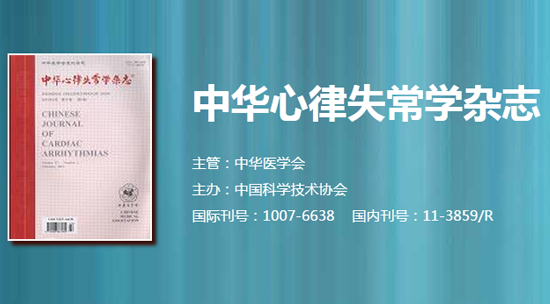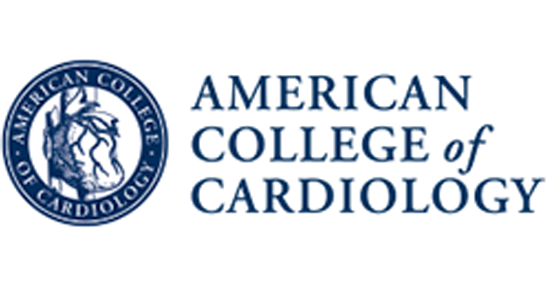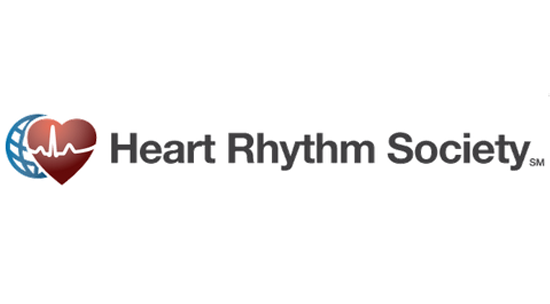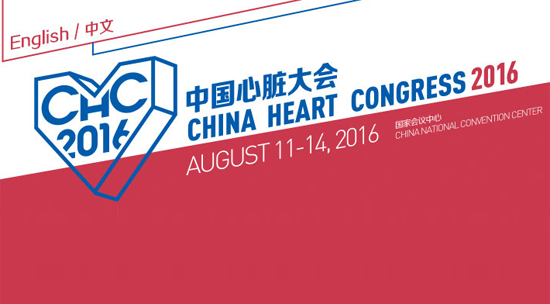Heart Rhythm主编—陈鹏生教授语音速递(四月刊 英文版)
<< First issue in Apr 2019 >>
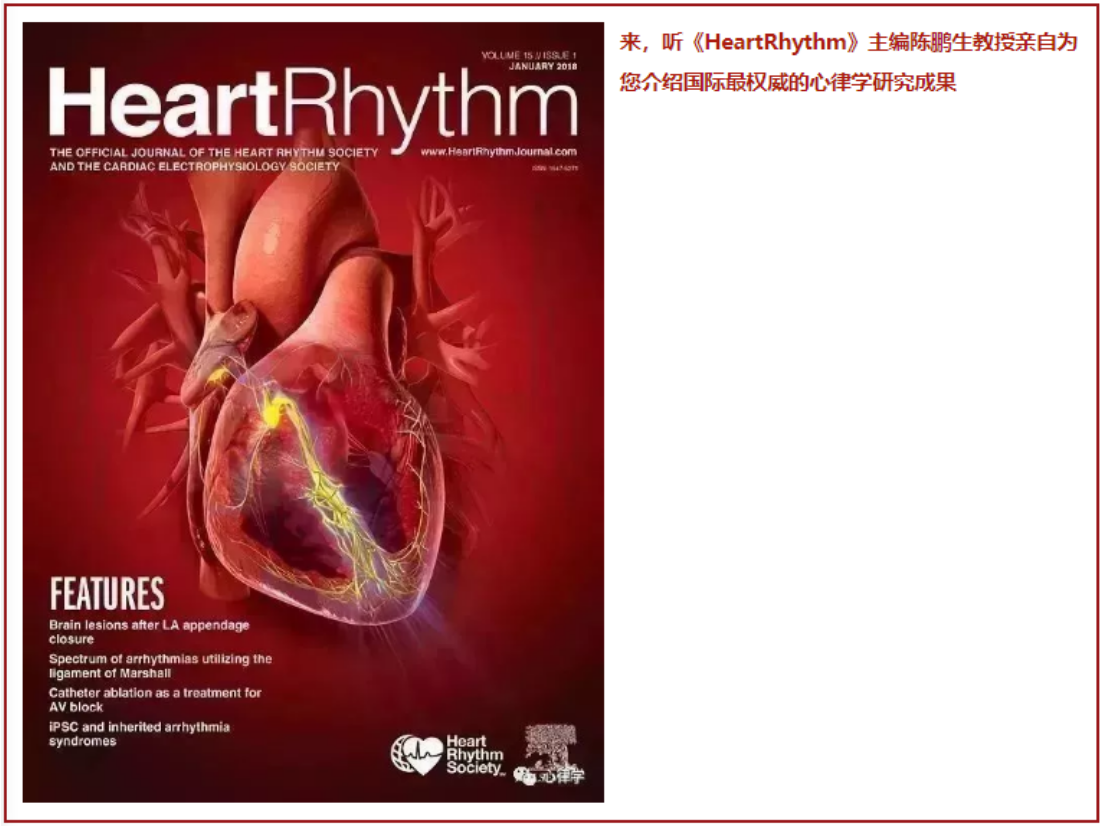 1
1The featured article this month is titled, “In-utero exposure to nicotine abolishes the postnatal response of the cardiac sodium current to isoproterenol in newborn rabbit atrium” by Biet et al. from the University of Sherbrooke, in Canada. An accompanying video author interview conducted by our online editor, Dr. Daniel Morin, can be found at the www.heartrhythmjournal.com website. The authors studied the sodium current of isolated rabbit cardiomyocytes. They found that isoproterenol increases sodium current by 50% in newborn sham rabbits but had no effect in newborn rabbits exposed to nicotine in-utero. These findings link fetal exposure to nicotine to persistent alterations of sodium current responses to isoproterenol. The authors proposed that these phenomena may be involved in sudden infant death syndrome. They also raise concerns about the use of nicotine replacement therapies for pregnant women.
2
The next article is written by Blum et al. from University Hospital Basel, Switzerland, and is titled “Incidence and predictors of atrial fibrillation progression: A systematic review and meta-analysis”. The authors extracted the number of cases with progression from paroxysmal to persistent AF, from paroxysmal to permanent AF and from persistent to permanent AF. They found that the incidence of AF progression appears to be relatively low, and the incidence seems to go down with longer follow-up. Age, hypertension, baseline atrial fibrillation type and follow-up duration explained a high proportion of the observed between-study heterogeneity. Because the existence of hypertension was significantly associated with AF progression, studies are needed to assess whether optimal blood pressure control may help to reduce AF progression in AF patients.
3
Up next is “Impact of the arrhythmogenic potential of long lines of conduction slowing at the pulmonary vein area”written by Mouws et al, from the Erasmus Medical Center, Rotterdam. The authors performed intra-operative high-density epicardial mapping of the pulmonary vein area in patients with and without preoperative atrial fibrillation. The found that atrial fibrillation patients more often present with continuous lines of adjacent areas of conduction delay and block than patients without atrial fibrillation. However, there is a considerable overlap in the amount of conduction abnormalities between patients with a history of paroxysmal and persistent AF. The presence of the conduction abnormalities suggest that reentry in the pulmonary vein area might play a role in the mechanisms of atrial fibrillation.
4
Kim et al. from Chungnam National University Hospital, Daejeon, Korea wrote the following paper titled “Atrial fibrillation occurring during head-up tilt testing”. They analyzed incidence, short-and long-term prognosis, and predictors for adverse outcomes of AF detected during head up tilts in patients without AF history. The incidence of AF during head up tilt was about 0.8% and short-term prognosis was favorable. However, about half of the cases had recurrences of AF after 3 years of follow up. Patients with AF lasting more than one hour had worse outcomes. Therefore, AF induced by head up tilt cannot be ignored. These patients need long term regular follow up care.
5
The next article is titled “Catheter ablation of premature ventricular complexes arising from the left fascicular system” by Zhang et al from Wuhan Asian Heart Hospital, China. The study had 27 patients. All the PVCs presented with a relatively narrow QRS and right bundle branch block morphology. The authors found that ablation of PVCs originating from the left fascicular system guided by an earliest presystolic fascicular potential was found to be safe and effective. It is interesting to note that these patients reported palpitations, chest discomfort and dizziness, but no heart failure, prior to ablation.
6
Next up is a paper titled “Ablation compared with drug therapy for recurrent ventricular tachycardia in arrhythmogenic right ventricular cardiomyopathy” by Mahida et al from the Brigham and Women’s Hospital, in Boston. This is a multicenter retrospective study including 110 ARVC patients. The authors found that amongst ARVC patients with a high VT burden, mortality and transplantation-free survival is not significantly different between drug- and ablation-treated patients. These patients have a high risk of recurrent VT despite drug therapy. Combined endocardial/epicardial ablation is associated with reduced VT recurrence compared to endocardial-only ablation. This study is limited by a lack of randomization.
7
Sharaf-Dabbagh et al., from the University of Michigan, wrote the following article titled “Significance of clinical ventricular tachycardias induced by antitachycardia pacing in patients with prior myocardial infarction.” Stored ICD electrograms of 162 consecutive patients with prior myocardial infarction referred for VT ablation were reviewed. They found that 28% of recorded VTs were ATP-induced. The presence of ATP-induced VT is associated with a higher VT recurrence rate post-ablation. None of the ATP-induced VTs recorded prior to the ablation procedure recurred post-ablation and therefore ATP-induced VTs represent a marker of VT recurrence risk, rather than the cause for VT recurrence. These findings are consistent with the previous observation that the presence of multiple inducible, non-clinical VTs is associated with more VT recurrences after ablation.
8
Next up is “A simple mechanism underlying the behavior of reentrant atrial tachycardia during ablation” by Takigawa et al. from Bordeaux University Hospital. The authors developed an algorithm to predict termination and conversion of atrial tachycardia based on the wavefront collision. They report that the accuracy to predict AT termination/conversion and the second AT circuit was 96% using that algorithm. Knowing this information could help the operator to modify the ablation strategy and to select the most effective ablation line.
9
The next paper is titled “Use and outcomes of subcutaneous implantable cardioverter-defibrillator (ICD) after transvenous ICD extraction” by Viani et al. from University Hospital of Pisa, Italy. This analysis describes current practice concerning S-ICD use after transvenous ICD explantation in 229 patients from 12 Italian centers. Their results show an increasing use of S-ICD over the years in patients who have undergone transvenous-ICD explantation. An S-ICD is preferably adopted in young patients, mostly in the case of infection. Complication rate was comparable between transvenous and S-ICD groups, and decreased when a sub or inter-muscular S-ICD generator position was adopted. The S-ICD’s safety profile seemed equivalent to that of transvenous ICD in this analysis. These results provide evidence in favor of adopting S-ICD in patients following extraction of a transvenous ICD.
10
El-Chami et al. from Emory University wrote the next paper titled “Long-term performance of a pacing lead family.” This is a single-center retrospective analysis of Tendril leads as compared to other pacing leads. Lead malfunction rates at 5 years were 7% for Tendril vs. 2.1% for non-Tendril leads. During follow-up of 10 years, the incidence of lead malfunction of Optim insulated Tendril leads was significantly higher than that of the non-Optim insulated Tendril leads. The authors conclude that Tendril leads appear to have a higher rate of malfunction than comparator leads. The Optim insulation may partly explain the higher failure rate. While this study raises the question of the reliability of the Abbott Optim leads, it definitely calls for more prospective evaluation of pacemaker leads.
11
Olshansky et al from the University of Iowa Hospitals wrote the next article titled “Competitive athletes with implantable cardioverter–defibrillators—How to program?” The data from this study came from the ICD Sports Registry. In this cohort, 62% were programmed with a high rate cutoff and 30% with long detection. Programming a high rate cutoff was associated with decreased risk of total and inappropriate shocks overall and during competition or practice. Programming long detection intervals was associated with fewer total shocks. The authors conclude that high rate cutoff and long detection duration programming of ICDs in athletes at risk of sudden death can reduce total and inappropriate ICD shocks without affecting survival or the incidence of loss of consciousness. However, because all participants had transvenous ICDs, these data do not apply to patients with subcutaneous ICDs.
12
Next up is “Association of regional myocardial conduction velocity with the distribution of hypoattenuation on contrast-enhanced perfusion computed tomography in patients with postinfarct ventricular tachycardia” by Ustunkaya et al from the Hospital of the University of Pennsylvania. 14 patients with post-infarct VT underwent pre-procedural contrast-enhanced perfusion multidetector CT followed by endocardial electroanatomical mapping and ablation. The authors found that the myocardial attenuation distribution on CT is associated with reduced regional conduction velocity and electrogram amplitude. Regions with low conduction velocity identified with low attenuation on contrast-enhanced perfusion multidetector CT may serve as important VT substrates in post-infarct patients. Incorporation of that imaging method may compliment electroanatomical mapping and result in new strategies for RF catheter ablaiton in patients with post-infarct VT.
13
13
O’Quinn et al. from Virginia Commonwealth University Medical Center wrote the next article titled “Epicardial injection of nanoformulated calcium into cardiac ganglionic plexi suppresses autonomic nerve activity and postoperative atrial fibrillation”. When injected into the GP, the time-release nanoformulated calcium chloride increases intracellular calcium and triggers apoptosis of the neuronal cells. The authors injected that substance into the left pulmonary vein GP in a canine model of AF. They showed that injection induced neuroapoptosis and modulated autonomic function. This reversed a postoperative reduction in atrial effective refractory period and suppressed postoperative atrial fibrillation. The small diameter of the nanoparticles facilitates the internalization of the payload, leading to neuronal cell death. This new method may be helpful in achieving effective GP ablations.
14
The next article is titled “Bachmann bundle and interatrial conduction: comparing atrial morphology to electrical activity” by Knol et al from Erasmus University Medical Center, Rotterdam. High-resolution epicardial mapping over Bachmann’s bundle during sinus rhythm was performed in 185 patients undergoing coronary artery bypass graft surgery. The results showed that Bachmann’s bundle is not always activated in a right-to-left direction. In almost one third of patients, a wavefront emerging or entering in the middle of Bachmann’s Bundle was also observed. A newly found posterosuperior bundle was consistently seen. Knowledge on the morphology of the interatrial bundles and how it relates to interatrial conduction can help interpret observations of electrical activity in this area.
15
Wan et al from the Krannert Institute of Cardiology, Indianapolis wrote the article titled “Small-conductance calcium-activated potassium current modulates the ventricular escape rhythm in normal rabbit hearts.” This study utilizes rabbit pseudotendon, which contains Purkinje cells that richly express the small conductance calcium activated potassium current, or SK current. The authors found that, contrary to its bradycardic effect in the sinus node, SK current blockade by apamin accelerates ventricular automaticity and causes repeated nonsustained VT in normal ventricles. These findings indicate that SK current is important in Purkinje fiber automaticity and may play a role in generating PVCs and VTs.
16
Next up is a contemporary review article titled “Evaluation and management of ventricular tachycardia in patients with dilated cardiomyopathy” by Ebert et al from University of Leipzig, Germany. That article is followed by a “Hands-on” article by Reddy et al, titled “Mitral isthmus ablation: A hierarchical approach guided by electroanatomic correlation”. This month’s HRS 40th Anniversary Viewpoints is written by Dr James Cox, titled “Reflections on a career in arrhythmia surgery.”
I hope you enjoyed this podcast. For Heart Rhythm, I’m Editor-In-Chief, Dr. Peng-Sheng Chen.
